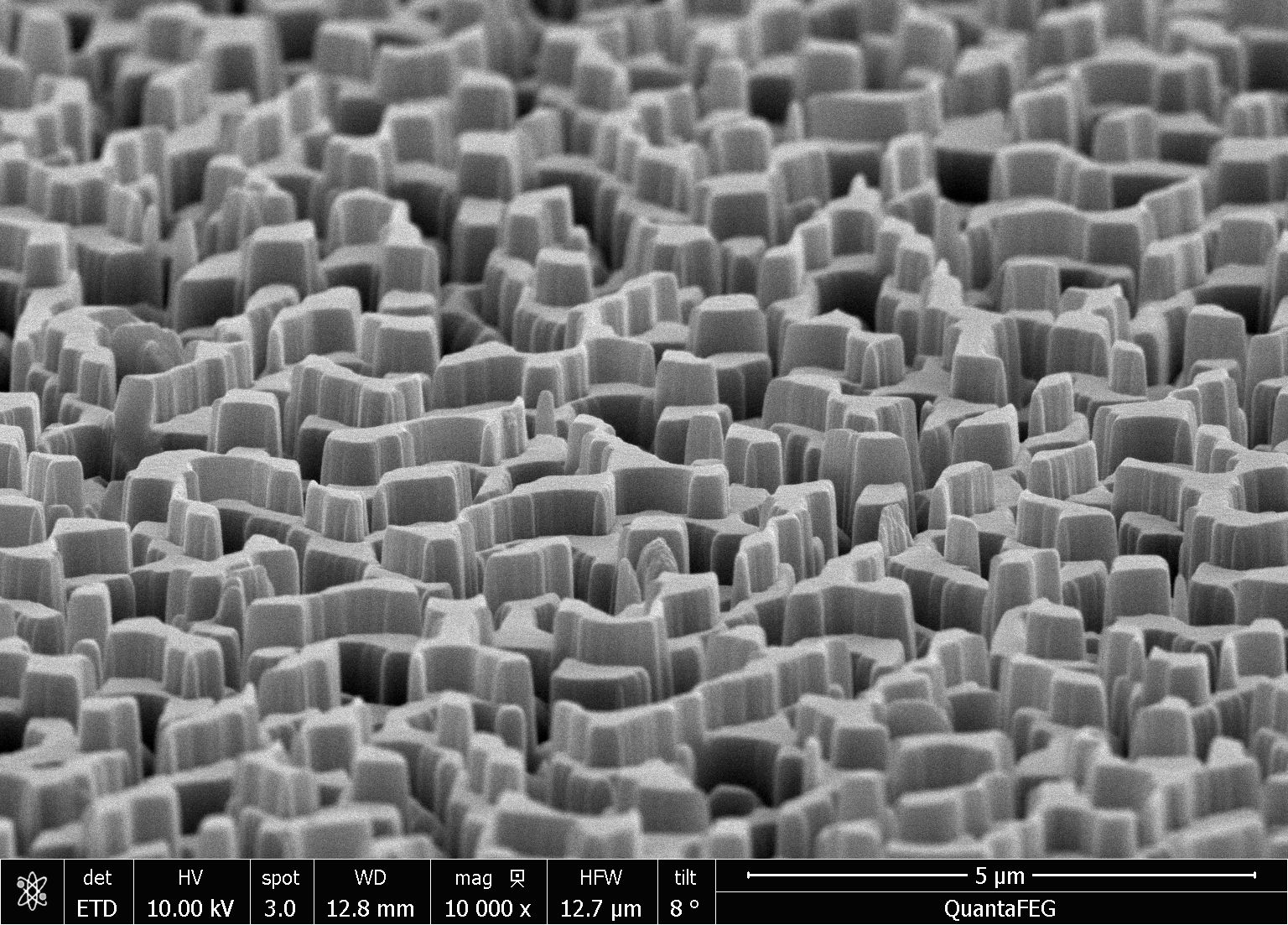
กก
Diffractive optical elements
Diffractive optical elements are used to shape the wavefront of incident light [1]. The following figure shows a SEM (scanning electron microscope) photo of a 4-phase-level diffractive optical element.

Diffractive optical element is a generic term, which may include kinoform, computer generated hologram, binary optical element, holographic optical element, Fresnel lens, hybrid lens, etc.[2]
Based on their functions, diffractive optical elements may be classified into flat-top beam shaping [3,4], beam splitting [5], general beam shaping [6], focal shaping [7] and 3-D shaping [8].
Flat-top beam shaping can be further classified into:
(1) flat-top beam shaping of a Gaussian beam with a specific beam size and good beam quality
(2) Beam homogenizing tolerant to incident beam size and beam quality
(3) Diffuser, tolerant to incident beam size and beam quality
(4) beam homogenizing for incoherent beams with microlenses
Beam splitting can be further classified into:
(1) 1D regular beam splitting
(2) 2D regular beam splitting
(3) 2D irregular beam splitting, which is also commonly referred to as structured light.
General beam shaping is commonly referred to as complicate image generation, such as multiple-line, rings, cross, etc.
Typical focal shaping includes optical elements with long depth of focus, short depth of focus, multiple focal spots, etc.
With 3-D shaping one can achieve almost arbitrary intensity distribution in all three spatial dimensions.
Wuxi OptonTech offers all these diffractive optical elements. The following menu shows our diffractive optical elements classified in terms of their functions.
References:
[1] Orange-Kedem, R., Nehme, E., Weiss, L.E. et al. 3D printable diffractive optical elements by liquid immersion. Nat Commun 12, 3067 (2021). https://doi.org/10.1038/s41467-021-23279-6
[2] Jose Sasian, https://wp.optics.arizona.edu/jsasian/wp-content/uploads/sites/33/2016/03/L15_OPTI517_DOE.pdf
[3] Jinsong Liu and M. R. Taghizadeh, Iterative algorithm for the design of diffractive phase elements for laser beam shaping, Optics Letters, 27(16): 1463-1465, 2002.
[4] Jinsong Liu, Adam J. Caley, M. R Taghizadeh, Symmetrical iterative Fourier-transform algorithm using both phase and amplitude freedoms", Optics Communications, 267: 347-355, 2006.
[5] Martin. J. Thomson, Jinsong Liu and M. R. Taghizadeh, Iterative algorithm for the design of free-space diffractive optical elements for fiber coupling, Applied Optics. 43:1996--1999, 2004
[6 ] Adam J. Caley, Martin J. Thomson, Jinsong Liu et al., Diffractive optical elements for high gain lasers with arbitrary output beam profiles, Optics Express, 15: 10699-10704, 2007.
[7] Jinsong Liu, Andrew. J. Waddie and M. R. Taghizadeh, Diffractive optics element with subdiffraction-limited depth of focus, Journal of Modern Optics, 50(2):227-237, 2003.
[8] Daniel Flamm, Daniel G. Grossmann, Marc Sailer, Myriam Kaiser, Felix Zimmermann, Keyou Chen, Michael Jenne, Jonas Kleiner, Julian Hellstern, Christoph Tillkorn, Dirk H. Sutter, Malte Kumkar, Structured light for ultrafast laser micro- and nanoprocessing, Optical Engineering, 60(2), 025105 (2021), https://doi.org/10.1117/1.OE.60.2.025105